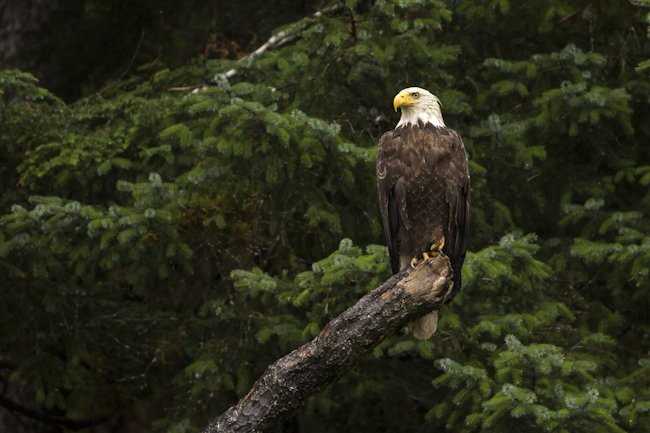Our second full day exploring the marvelous Alexander Archipelago of Southeast Alaska was completely different than the first in terms of weather; while yesterday we had one of those rare sunny days today we experienced a more typical weather for the region. National Geographic Sea Bird found the new day enveloped by a thick fog that seemed to erase any sign of the outside world. Only portions of the surrounding mountains, crowned by tall Sitka spruce and western hemlock trees, revealed themselves out of the whitish mantle, making for spectacular scenery of surreal beauty. We arrived to Port Althorp shortly before sunrise and prepared to explore it; located on the northern part of the large Chichagof Island, Port Althorp is a quiet, out-of-way place not frequently visited. Only local fishermen from the small nearby community of Elfin Cove visit it from time to time. The ruins of an old salmon cannery that operated there between 1918 and 1940 when it was destroyed by fire are only visited by ravens, bald eagles, and brown bears. We saw lots and lots of sign of the great plantigrades including their impressive tracks in the mud, some of them so fresh-looking that they made us to look over our shoulders more than once. Kayakers explored the bay and saw leaping salmon, flying eagles, and curious harbor seals.
During lunch we travel a short distance to the north and dropped the anchor at the Hobbit Hole, a quiet place in the middle of the Inian Islands. The Inians are a small group of islands located between Chichagof Island and the southern portion of Glacier Bay National Park on the mainland, and they create a bottleneck effect for the strong tidal currents that flow in and out of the northern part of the Inside Passage four times every 24 hours and 50 minutes. The currents bring fish and the local population of Steller sea lions know it; when the water flow is fast and turbulent, the huge pinnipeds swim around with ease and capture salmon, rockfish, or halibut to satisfy their enormous appetites. If the prey is too big to swallow it whole, they shake it violently at the surface in an effort to break it into more manageable pieces that end up attracting a multitude of gulls and even bald eagles. Pigeon guillemonts, marbled and ancient murrelets, and tufted puffins adorned the waters, whereas sea otters rested in the middle of the same kelp forests that they protect by eating sea urchins, a favorite prey species. All that life and dynamism around us made for another great day exploring coastal Alaska.







